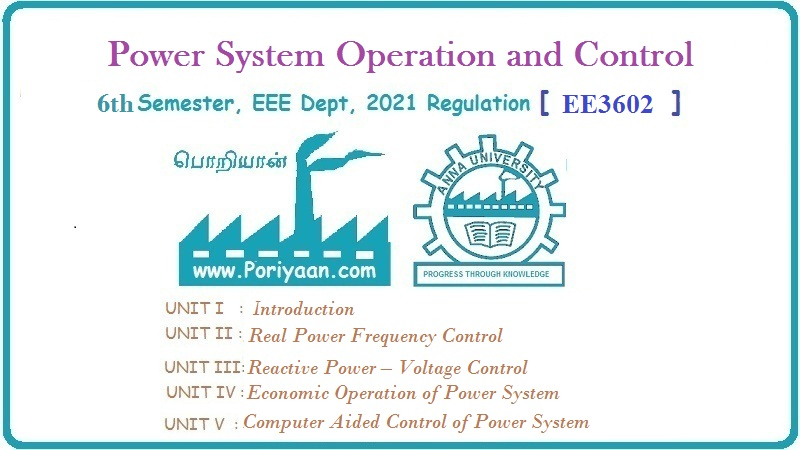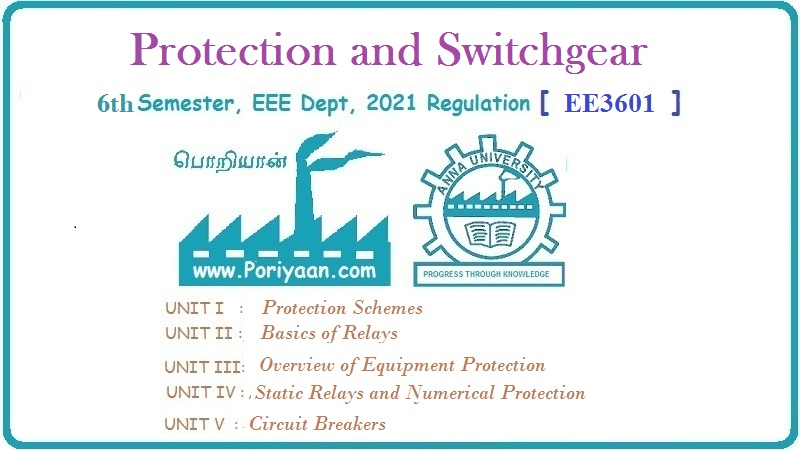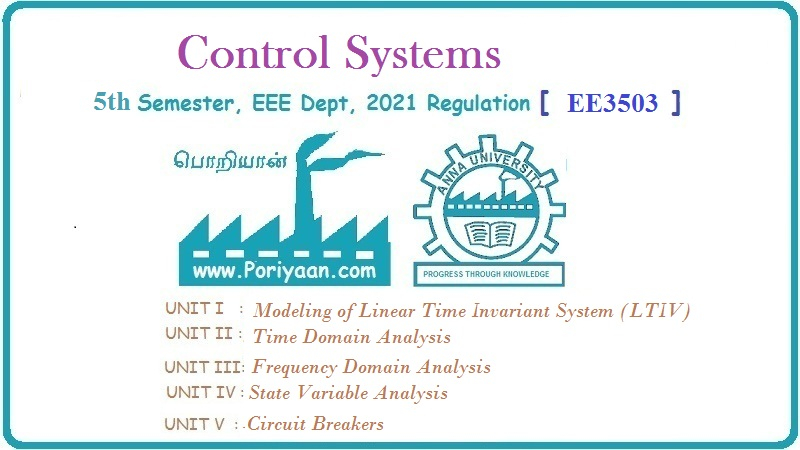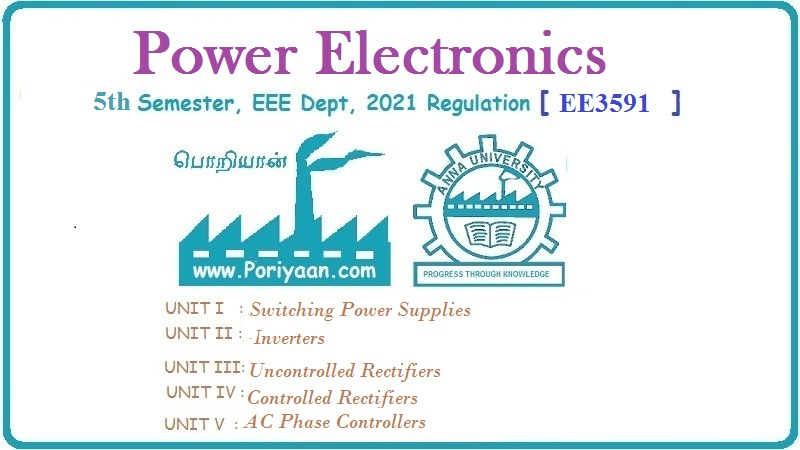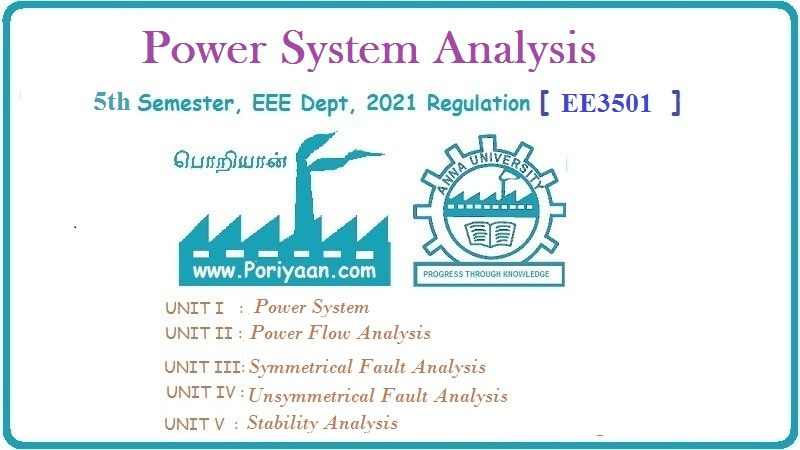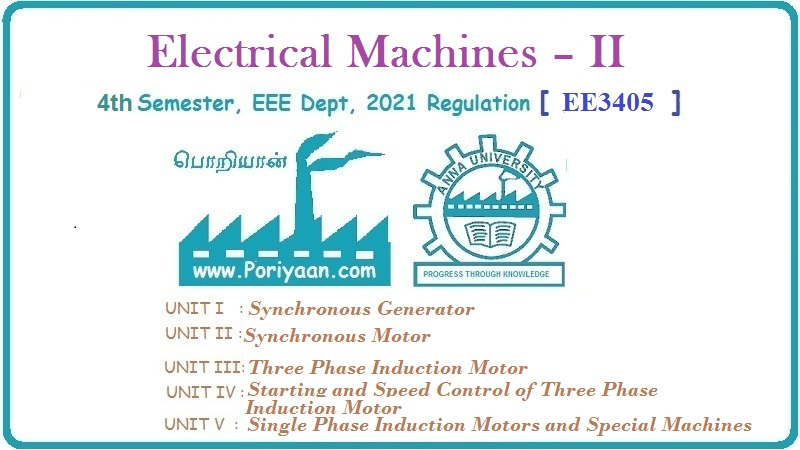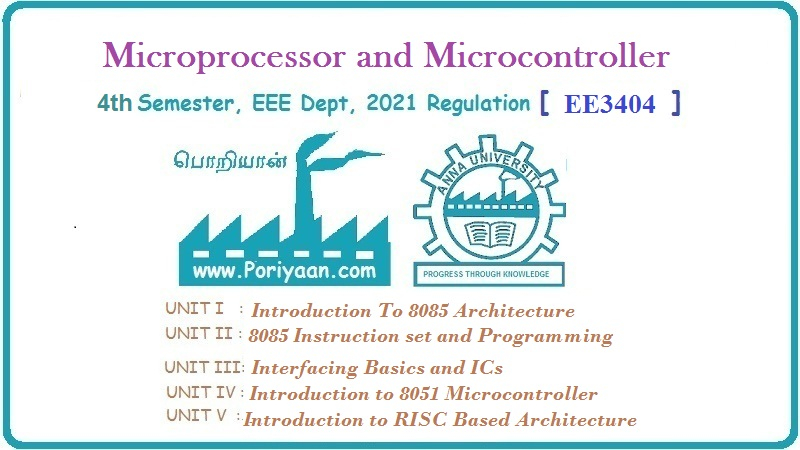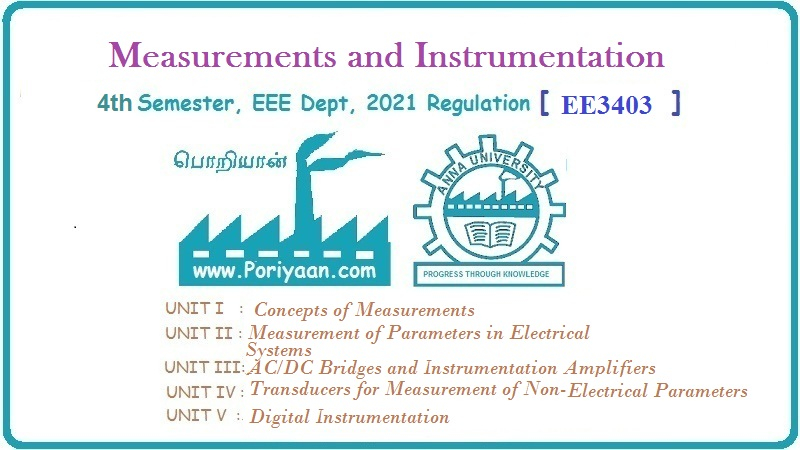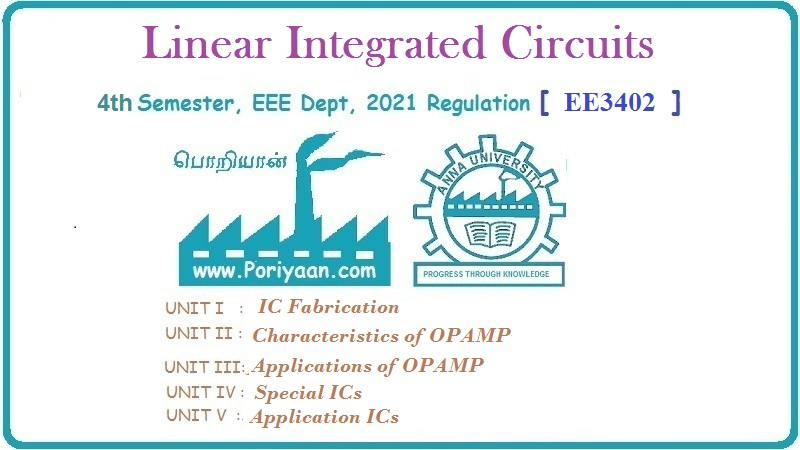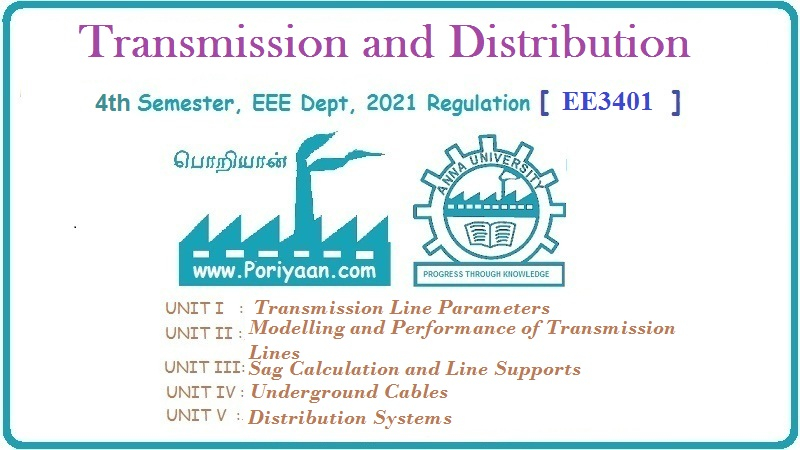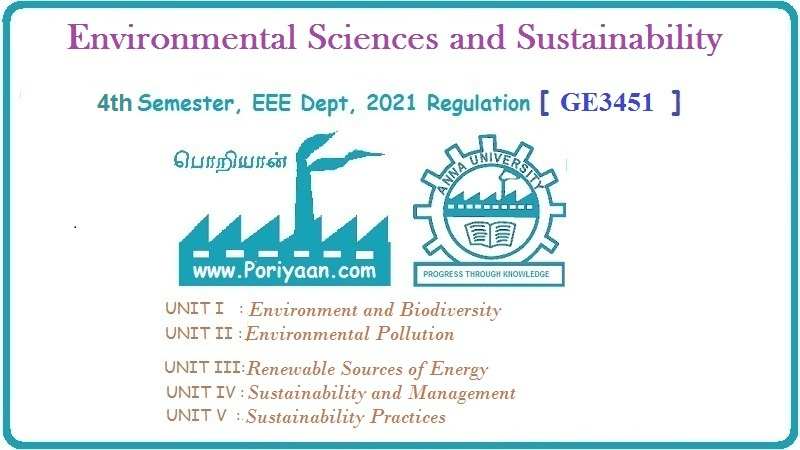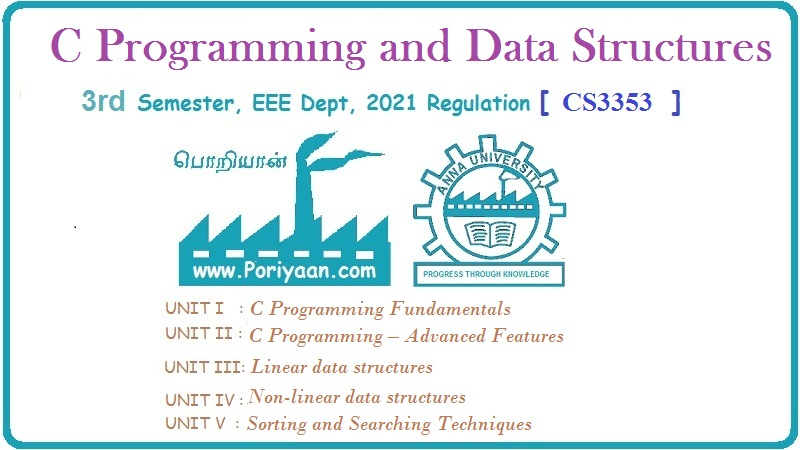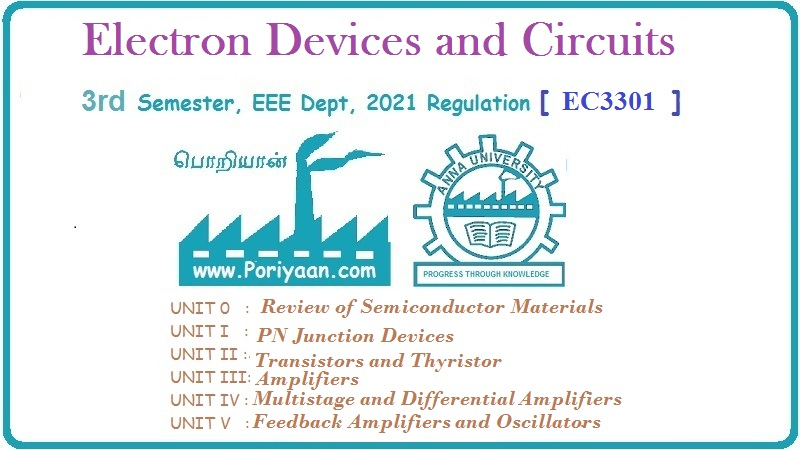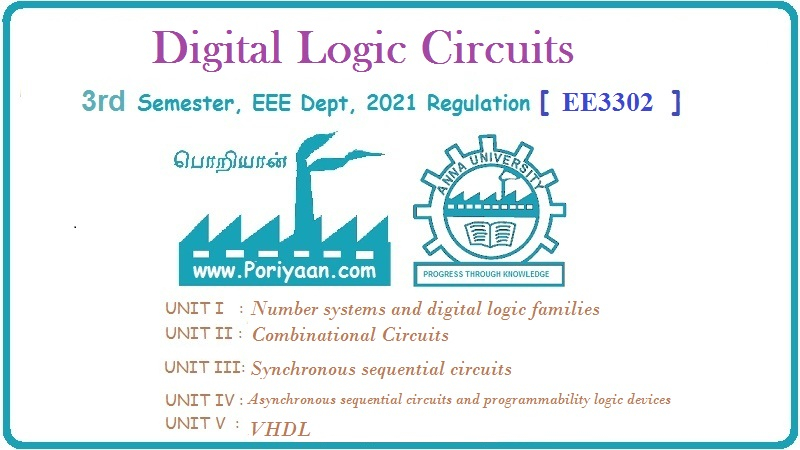Physics for Electrical Engineering
PH3202 2nd Semester 2021 Regulation

2021 regulation - 1st year, 2nd semester paper for EEE Department (Electrical and Electronics Engineering Department). Subject Code: PH3202, Subject Name: Physics for Electrical Engineering, Batch: 2021, 2022, 2023, 2024. Institute: Anna University Affiliated Engineering College, TamilNadu. This page has Physics for Electrical Engineering study material, notes, semester question paper pdf download, important questions, lecture notes.
PDF Download Links
Physics for Electrical Engineering
- Dielectric Materials and Insulation
- Dipole moment (μ)
- Relative Permittivity (εr) or Dielectric Constant
- Matter Polarisation - Electronics Polarisation
- Polarisation vector
- Polarization mechanisms in dielectrics
- Electronic Polarisation
- Ionic Polarisation
- Orientational Polarisation
- Space - charge or interfacial polarisation
- Total Polarisation
- Frequency Dependence of Polarization
- Local field or Internal field
- Clausius - Mosotti equation
- Dielectric Loss
- Gauss's law and Boundary condition
- Dielectric Strength
- Introduction to Insulation breakdown in gases, liquids and solids
- Types of dielectric breakdown
- Capacitor materials typical capacitor construction
- Ferroelectricity
- Piezo-Electricity
- Piezo - electric materials
- Crystal Oscillator
- Crystal Filter
- Pyroelectricity
- Pyroelectric Crystals and their Applications
- Anna university solved problems
- Part A - 2 Marks Questions and Answer
- Additional Q and A
- Part B - 16 Marks Questions
- Assignment Problems
- Electrical Properties of Materials
- Classical free electron (cfe) theory of metals
- Expression for electrical conductivity of a metal (Derivation)
- Expression for thermal conductivity of a metal (Derivation)
- Anna university solved problems
- Quantum free electron (QFE) theory
- Degenerate States
- Tunneling
- Fermi-Dirac Statistics
- Anna university solved problem
- Density of energy states
- Electron in periodic potential
- Energy Bands in Solids
- Tight binding approximation
- Effective mass of electron and hole
- Concept of hole: (or) Effective or negative mass of electron
- Anna university solved problems
- Part A - 2 Marks Questions and Answer
- Additional Q and A
- Part B - 16 Marks Questions
- Additional PART B - 16 Marks Questions
- Assignment Problems
- Magnetic Properties of Materials
- Magnetic Materials Classification
- Diamagnetic Effect
- Paramagnetic Effect
- Paramagnetism in the conduction electrons in metals
- Ferromagnetic Effect
- Exchange Interaction and Ferromagnetism
- Quantum interference devices
- Giant magneto resistance (GMR) - devices sensor spin valve
- Anna university solved problems
- Part A - 2 Marks Questions and Answer
- Anna university solved problems
- Part B - 16 Marks Questions
- Semiconductors
- Direct and indirect band gap semiconductors
- Intrinsic Semiconductors
- Energy Band Diagram
- Carrier concentration in intrinsic semiconductors
- Intrinsic carrier concentration
- Extrinsic or Impure Semiconductors
- Carrier concentration in n - type smaloy semiconductors [Derivation]
- Concentration of holes in valence band of p- type semiconductors [Derivation]
- Variation of carrier concentration with temperature and impurity
- Carrier Transport in Semiconductor mobility
- Mobility
- Drift and Diffusion
- Hall effect
- Hall Devices
- Schottky diode
- Ohmic contacts
- Anna university solved problems
- Part A - 2 Marks Questions and Answer
- Additional Q and A
- Part B - 16 Marks Questions
- Additional part B (16 Marks Questions)
- Assignment Problems
- Optical Properties of Materials
- Optical Processes in Semiconductors
- Absorption and emission of light in semiconductors
- Charge injection and radiative recombination
- Carrier generation and recombination processes's
- Optical absorption, loss and gain
- Optical Processes in Quantum wells
- Optoelectronic Devices
- Light Detectors
- Solar cell
- Light emitting diode (LED)
- Laser diodes
- Organic semiconductors: optical processes and devices
- Excitonic State
- Electro-optic effects
- Non linear optics
- Modulators
- Optical (photonic) switching
- Plasmonics
- Part A - 2 Marks Questions and Answer
- PART B (16 Marks Questions)
- Nano Devices
- Density of states for solids
- Significance between fermi energy and volume of the material
- Quantum Confinement
- Quantum structures
- Density of states in quantum well, quantum wire and quantum dot structure
- Bandgap of nanomaterials
- Single electron phenomena
- Single electron transistor (set)
- Conductivity of metallic nanowires
- Ballistic Transport
- Quantum resistance and conductance
- Carbon nanotubes (CNT)
- Properties of CNTs
- Applications of carbon nanotubes
- Spintronics devices and applications
- Optics in Quantum structures
- Quantum well laser
- Part A - 2 Marks Questions and Answer
- Part B (16 Marks Questions)
PDF Download Links
Physics for Electrical Engineering
Unit I: Dielectric Materials and Insulation
- Dielectric Materials and Insulation
- Dipole moment (μ)
- Relative Permittivity (εr) or Dielectric Constant
- Matter Polarisation - Electronics Polarisation
- Polarisation vector
- Polarization mechanisms in dielectrics
- Electronic Polarisation
- Ionic Polarisation
- Orientational Polarisation
- Space - charge or interfacial polarisation
- Total Polarisation
- Frequency Dependence of Polarization
- Local field or Internal field
- Clausius - Mosotti equation
- Dielectric Loss
- Gauss's law and Boundary condition
- Dielectric Strength
- Introduction to Insulation breakdown in gases, liquids and solids
- Types of dielectric breakdown
- Capacitor materials typical capacitor construction
- Ferroelectricity
- Piezo-Electricity
- Piezo - electric materials
- Crystal Oscillator
- Crystal Filter
- Pyroelectricity
- Pyroelectric Crystals and their Applications
- Anna university solved problems
- Part A - 2 Marks Questions and Answer
- Additional Q and A
- Part B - 16 Marks Questions
- Assignment Problems
Unit II: a. Electrical Properties of Materials
- Electrical Properties of Materials
- Classical free electron (cfe) theory of metals
- Expression for electrical conductivity of a metal (Derivation)
- Expression for thermal conductivity of a metal (Derivation)
- Anna university solved problems
- Quantum free electron (QFE) theory
- Degenerate States
- Tunneling
- Fermi-Dirac Statistics
- Anna university solved problem
- Density of energy states
- Electron in periodic potential
- Energy Bands in Solids
- Tight binding approximation
- Effective mass of electron and hole
- Concept of hole: (or) Effective or negative mass of electron
- Anna university solved problems
- Part A - 2 Marks Questions and Answer
- Additional Q and A
- Part B - 16 Marks Questions
- Additional PART B - 16 Marks Questions
- Assignment Problems
Unit II: b. Magnetic Properties of Materials
- Magnetic Properties of Materials
- Magnetic Materials Classification
- Diamagnetic Effect
- Paramagnetic Effect
- Paramagnetism in the conduction electrons in metals
- Ferromagnetic Effect
- Exchange Interaction and Ferromagnetism
- Quantum interference devices
- Giant magneto resistance (GMR) - devices sensor spin valve
- Anna university solved problems
- Part A - 2 Marks Questions and Answer
- Anna university solved problems
- Part B - 16 Marks Questions
Unit III: Semiconductors and Transport Physics
- Semiconductors
- Direct and indirect band gap semiconductors
- Intrinsic Semiconductors
- Energy Band Diagram
- Carrier concentration in intrinsic semiconductors
- Intrinsic carrier concentration
- Extrinsic or Impure Semiconductors
- Carrier concentration in n - type smaloy semiconductors [Derivation]
- Concentration of holes in valence band of p- type semiconductors [Derivation]
- Variation of carrier concentration with temperature and impurity
- Carrier Transport in Semiconductor mobility
- Mobility
- Drift and Diffusion
- Hall effect
- Hall Devices
- Schottky diode
- Ohmic contacts
- Anna university solved problems
- Part A - 2 Marks Questions and Answer
- Additional Q and A
- Part B - 16 Marks Questions
- Additional part B (16 Marks Questions)
- Assignment Problems
Unit IV: Optical Properties of Materials
- Optical Properties of Materials
- Optical Processes in Semiconductors
- Absorption and emission of light in semiconductors
- Charge injection and radiative recombination
- Carrier generation and recombination processes's
- Optical absorption, loss and gain
- Optical Processes in Quantum wells
- Optoelectronic Devices
- Light Detectors
- Solar cell
- Light emitting diode (LED)
- Laser diodes
- Organic semiconductors: optical processes and devices
- Excitonic State
- Electro-optic effects
- Non linear optics
- Modulators
- Optical (photonic) switching
- Plasmonics
- Part A - 2 Marks Questions and Answer
- PART B (16 Marks Questions)
Unit V: Nano Devices
- Nano Devices
- Density of states for solids
- Significance between fermi energy and volume of the material
- Quantum Confinement
- Quantum structures
- Density of states in quantum well, quantum wire and quantum dot structure
- Bandgap of nanomaterials
- Single electron phenomena
- Single electron transistor (set)
- Conductivity of metallic nanowires
- Ballistic Transport
- Quantum resistance and conductance
- Carbon nanotubes (CNT)
- Properties of CNTs
- Applications of carbon nanotubes
- Spintronics devices and applications
- Optics in Quantum structures
- Quantum well laser
- Part A - 2 Marks Questions and Answer
- Part B (16 Marks Questions)
PDF Download Links

PH3202
PHYSICS FOR ELECTRICAL ENGINEERING
OBJECTIVES:
•
To make the students to understand the basics of dielectric materials and
insulation.
•
To understand the electrical properties of materials including free electron
theory, applications of quantum mechanics and magnetic materials.
•
To instil knowledge on physics of semiconductors, determination of charge
carriers and device applications
•
To establish a sound grasp of knowledge on different optical properties of
materials, optical displays and applications
•
To inculcate an idea of significance of nano structures, quantum confinement
and ensuing nano device applications.
UNIT I
DIELECTRIC MATERIALS AND INSULATION
Matter
polarization and relative permittivity: definition dipole moment and
polarization vector P- polarization mechanisms: electronic, ionic,
orientational, interfacial and total polarization - frequency dependence local
field and Causius-Mossetti equation - dielectric constant and dielectric loss
Gauss's law and boundary conditions - dielectric strength, introduction to
insulation breakdown in gases, liquids and solids - capacitor materials -
typical capacitor constructions - piezoelectricity, ferroelectricity and
pyroelectricity - quartz oscillators and filters - piezo and pyroelectric
crystals.
UNIT II
ELECTRICAL AND MAGNETIC PROPERTIES OF MATERIALS
Classical
free electron theory Expression for electrical conductivity - Thermal
conductivity, expression - Quantum free electron theory :Tunneling - degenerate
states - Fermi- Dirac statistics - Density of energy states - Electron in
periodic potential - Energy bands in solids - tight binding approximation -
Electron effective mass concept of hole. Magnetic materials: Dia, para and
ferromagnetic effects - paramagnetism in the conduction electrons in metals -
exchange interaction and ferromagnetism - quantum interference devices - GMR
devices.
UNIT III
SEMICONDUCTORS AND TRANSPORT PHYSICS
Intrinsic
Semiconductors - Energy band diagram - direct and indirect band gap
semiconductors - Carrier concentration in intrinsic semiconductors - extrinsic
semiconductors - Carrier concentration in N-type & P-type semiconductors -
Variation of carrier concentration with temperature - Carrier transport in
Semiconductors: Drift, mobility and diffusion - Hall effect and devices - Ohmic
contacts - Schottky diode.
UNIT IV
OPTICAL PROPERTIES OF MATERIALS
Classification
of optical materials - Optical processes in semiconductors: optical absorption
and emission, charge injection and recombination, optical absorption, loss and
gain. Optical processes in quantum wells - Optoelectronic devices: light
detectors and solar cells - light emitting diode laser diode - optical
processes in organic semiconductor devices -excitonic state - Electro-optics
and nonlinear optics: Modulators and switching devices - plasmonics.
UNIT V
NANO DEVICES
Density
of states for solids - Significance between Fermi energy and volume of the
material - Quantum confinement - Quantum structures - Density of states for
quantum wells, wires and dots - Band gap of nanomaterials -Tunneling - Single
electron phenomena - Single electron Transistor. Conductivity of metallic
nanowires - Ballistic transport - Quantum resistance and conductance - Carbon
nanotubes: Properties and applications - Spintronic devices and applications
Optics in quantum structures - quantum well laser.
TOTAL:
45 PERIODS
OUTCOMES:
At
the end of the course, the students should be able to
•
know basics of dielectric materials and insulation.
•
gain knowledge on the electrical and magnetic properties of materials and their
applications understand clearly of semiconductor physics and functioning of
semiconductor devices
•
understand the optical properties of materials and working principles of
various optical devices
•
appreciate the importance of nanotechnology and nanodevices.
TEXT BOOKS:
1.
S.O. Kasap. Principles of Electronic Materials and Devices, McGraw Hill
Education (Indian Edition), 2020.
2.
R.F.Pierret. Semiconductor Device Fundamentals. Pearson (Indian Edition), 2006.
3.
G.W.Hanson. Fundamentals of Nanoelectronics. Pearson Education (Indian
Edition), 2009.
REFERENCES:
1
.Laszlo Solymar, Walsh, Donald, Syms and Richard R.A., Electrical Properties of
Materials, Oxford Univ. Press (Indian Edition) 2015.
2.
Jasprit Singh, Semiconductor Optoelectronics: Physics and Technology, McGraw-
Hill Education (Indian Edition), 2019.
3.
Charles Kittel, Introduction to Solid State Physics, Wiley India Edition, 2019.
4.
Mark Fox, Optical Properties of Solids, Oxford Univ. Press, 2001.
5.
Parag K. Lala, Quantum Computing: A Beginner's Introduction, McGraw-Hill Education
(Indian Edition), 2020.
Physics for Electrical Engineering: Unit I: Dielectric Materials and Insulation,, Physics for Electrical Engineering: Unit II: a. Electrical Properties of Materials,, Physics for Electrical Engineering: Unit II: b. Magnetic Properties of Materials,, Physics for Electrical Engineering: Unit III: Semiconductors and Transport Physics,, Physics for Electrical Engineering: Unit IV: Optical Properties of Materials,, Physics for Electrical Engineering: Unit V: Nano Devices 2nd Semester EEE Dept 2021 Regulation : PH3202 2nd Semester 2021 Regulation Physics for Electrical Engineering
